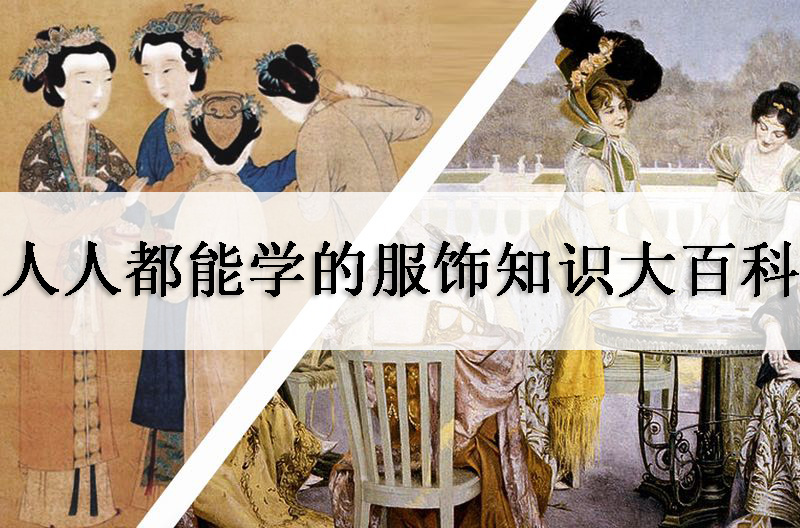
当前课程知识点:量子力学前沿选题 > Chapter 10 Bose-Einstein Condensation > Homework10 > S9.3 The integer quantum Hall effect(3)
下面呢
我们再来仔细讲一讲出拓扑的根据
好
我做这个量子霍尔效应的物理
那它是一个长方形
长方形本来
它应该有边界条件对吧
现在有了磁场
就稍微复杂一些
就是我这个边界条件 要稍微修改修改
在这大家可以看我的教科书 里面有
那么在y方向
是朗道gauge
y方向还和原来是一样
你看
波函数x是不变的
y我从0变到Ly
它波函数是不变的
在这个x要变的时候
这个式子要改变一下
你看y不变
我让x从0变到Lx
它不是波函数不变
因为这个时候它有个Ay
那么这个时候
你就要把原来的布里渊区
现在改成磁布里渊区
也就是周期边界条件要加上
前面有这样一个因子
不是直接的波函数相当
而是它有一个phase的变化
这个就是边界条件
好了
我现在有个长方形
比如说是从长方形上的某一点出发
我到另外一点去
我做我的旅行计划的时候
有两个计划
一个是先往东再往北
达到目的地
可是我也可以先往北再往东
同样到达目的地
好 那就是我用这个刚才的
周期性的边界条件的时候
一个我先往北再往东
我就是先用后面的条件
后用前面的条件
我要是先往东后往北呢
我就是先用前面条件
后用后面的条件
你这俩得的结果得一样
你要要求这两
边界条件to be consistent
那你得到是的是什么结果
就是这个结果
大家一做就知道
就是说这个东西要等于1
而这个东西是什么
那就是相当于
你原来有比如说有一定的F\Phi
我把\Phi变了一个\Phi 0的整数倍
那个时候它的这phase的变化就这么大
所以说这个时候
也就是说你通过你这个样品上的flux
就应该是磁通的整数倍
好 你现在把刚才的那一张纸
两头一接
x的两头一接 再把y的两头一接
就变了一个torus
那么在这个torus上面
经过了有整数倍的这个磁通
这个时候它这个拓扑就完全就清楚了
这个地方我把这个话稍微为严格一点
所以我得仔细说一说
Once a tours is obtained
the inevitable topology appears
你把这个样品做成一个tours
这个时候它的拓扑就明显
It is the topological invariant
that defines the first
Chern class of the mapping
of the Brillouin zone of a torus
onto the complex space
of wave functions u(x, y)
这句话比较长 解释一下
这个拓扑是什么拓扑
这个拓扑是代表一个映射的拓扑
什么映射呢
你就是在这个torus上面一点
这点的坐标是什么
当然实际上就是(kx, ky) 对不对
你把这个(kx, ky)带到那个u of (kx, ky)里头去
这个u当然就是
比如说是x y的函数 对吧
你把(kx, ky)一固定 这个函数就固定了
所以你这个映射就是从torus上面一点
(kx, y)就映射到
Hilbert空间上面去
就是波函数空间的这个上面这一点去
那点就是这个波函数u as a function of x y 对吧
这个就是这个mapping
这个mapping 这个映射的拓扑
来代表这个映射的拓扑的
有一个量子数
也一个整数
就叫做the first Chern class
这个Chern就是陈省身先生
陈 就第一陈类
这样一个就是这个拓扑量
下边更拓扑了
还得解释一下
In the language of fiber bundle theory
the Hall conductance is the first Chern class
of a U(1) principal fiber bundle
of the ground state wave function
on the base manifold
of a torus the Brilluoin zone
这句话引入纤维丛的概念
纤维丛它有个底空间
这个底空间就是我们的这个
磁布里渊区它上面一点
原来是xy
你当然也可以把它用\phi和\theta来表示
沿着这个torus
大圆这个方向用\phi来表示
沿着小圆这个变化你用\theta来表示
一样的 是吧
这就用u
原来是kx ky
你现在是torus上面那个坐标
来表示它 对吧 好
那么现在呢 你就把这个
布里渊区叫做底空间 base manifold
这个底空间上边会长出头发来
长出一根一根头发来
这些头发呢就是相当于纤维
这就叫fiber
如果你要是一个non Abelian
你在一点就长出若干根头发来
当然得好多点
那当然就是好多丛头发
就是有好多丛头发
这就是叫纤维丛
这头发是什么
头发就相当于wave function
所以你在底空间
底空间里边有这个kx ky
你把它一投影
投影到Hilbert空间里面
就得到了u sub (kx, ky) of (x, y)了
对吧
你就从这个torus
做一个映射
映射到Hilbert空间去了
这样的几何的东西
就叫做一个纤维丛
为什么叫U(1) principle fiber bundle
你现在用的
你只加了一个磁场
这是一个Abelian gauge field
所以这叫U(1)
你要是加的是SU(2)场
那就是SU(2) principle fiber bundle
好 代表这个mapping的
就是这个first Chern class
这个一会再来表示
wave function of the torus
我们就把它写成u of (\phi, \theta)
(\phi, \theta)就代表了
你可以把它看成是一个Bloch球上面这个坐标
那么我们这个torus上面的坐标
在讨论物理的时候是(kx, ky)
你现在把这个平面折成一个torus以后
它上面的坐标就是(\phi, \theta)
对吧 刚才说过
比如说沿着这个大圆
你这个坐标的变化就\phi
小的一个圆你坐标就是\theta
那现在torus的local curvature是什么
torus它是一个曲面了
曲面上每个点它有它的这个曲率
那就这个东西
两倍 你把这个u拿来
一个是对\theta做偏导
一个对\phi为偏导
它的这个scalar product imaginary part
这个就代表local curvature
这个local curvature是什么呢
就代表你
比如说你把一个量
一个物理量
一个物理场
在这个torus上面你做一个封闭的曲线
你在这个封闭的曲线上面把一个物理场
它是个矢量
你要把它做平行移动兜一个圈
local curvature is the parallel transport
mismatch around a closed contour
per area closed
你在torus上面做一个封闭曲线
你把一个矢量从一点开始
兜一圈回来了
它 平行移动它这两个矢量之间
并不重复 重合
所以有个mismatch
好了 你现在把这个mismatch的角
被你这个曲线包含住的面积
来除一除 得到的就是这个local curvature
这个local curvature在这
就陈省身先生
为什么叫fist Chern class
他把原来的这个微分几何里面
这个Gauss-Bonnet formula给它推广了
本来是这样
你把一个曲面拿来
你把这个local curvature做这个面积分
沿着这个torus做面积分
再被2\pi除
原来这个Gauss Bonnet证明
这个东西应该是一个整数
那个是local curvature
现在陈省身把它推广了
陈省身的这个local curvature是这个
这个就是我们量子力学里的问题了
这是量子力学里的u
所以这个呢
我的物理问题它的几何意义
所以这个是物理的东西
也就是陈省身
把原来的Gauss-Bonnet formula给推广
就是我现在的 从我的这个
quantum Hall里面的这个
TKNN做的这个local curvature
我要是在我的torus上面做一个积分
被2\pi除应该是一个整数
这个当然别人就管它叫做Chern number
好
现在我们就来考虑具体的量子Hall的情况
我在这个torus上面画一个封闭曲线
我来算这个东西
问题是你这个算这个积分是沿着这个曲线积分
一个torus上面的封闭曲线
它有一里面有一个外面 对吧
所以说 我做这个积分
我们可以做它沿着里面做积分
我可以沿着外面做积分
那你得出来的东西怎么办
那也就是说积分不算那个2\pi
integral KdS我沿着里面做
沿着外边做
你要应该得到一样的结果
结果那就应该是差2\pi的整数倍
对吧 好
我现在这么办
我把这个封闭的曲线
越做越小 越做越小
就是里面的这个积分越来越小
外边的积分越来越大
我把里边的缩成0
外边的减里边的 本来应该是差2\pi n的
现在外边干脆就得2\pi n了
所以 我这个积分本身是2\pi n
你把2\pi除过来你就得到了这个结果
我这个积分被2\pi除就是一个整数
对不
这个就first Chern number 第一陈类
或者第一陈数
所以说现在经过了陈省身推广的
这个Gauss-Bonnet formula现在就叫
Gauss-Bonnet-Chern relation
你就知道为什么TKNN他们得到那个积分
必须是个整数
在这里把这个整数告诉你了
特别奇怪的这个quantum resistance
它可以量的非常非常之准确
跟具体的物理性质
只要你满足决定性的物理条件
低温强磁场 no mobility
行了 别的不要
你怎么换怎么变它这个数不变
结果它这个拓扑量你小变
你说我变一变Hamiltonian
本来你一变Hamiltonian 物理应该变的
可是现在这它捆住了
我这个quantum Hall resistance它是个
拓扑量是受拓扑保护的
你不能说我让变一点
它是个整数 它不能变一点
所以说这个量它是一个拓扑量
等你到了那个要填充第二个
另外一个朗道能级的时候
它那个的Hamiltonian当然变的非常大
在那个地方 就离开了plateau和下边那个
\rho xx等于0这个条件的时候
填充朗道level的时候
你当然那个时候的Chern number
就是ill defined的了
它就不再存在 它要变嘛
它从2变成3 你中间没有这个整数
所以它是ill defined 当你填完了
到下一个 上面是plateau下面\rho xx等于0
这套东西就都又应用了
于是你那个n就是first Chern class
或者是
first Chern number 就完了
在这个地方仔细把这个讲一讲的目的
就是要告诉大家
拓扑
当然在粒子物理里面讨论的比较早
在凝聚态物理里面首先把拓扑引进来
就是1980到1985这一段
发展起来的整数量子霍尔效应
于是拓扑就进到物理来了
我们这一章的下面还要继续
跟这个拓扑打交道
-S1.1 Algebraic method of solving the 1D harmonic oscillator eigenproblem(1).
-S1.1 Algebraic method of solving the 1D harmonic oscillator eigenproblem(2)
-S1.2 Particle number representation, particle creation & annihilation operators
-S1.3 Change of basis and dynamical variables S1.4The continuous one-particle spectrum
-S1.4 The continuous one-particle spectrum S1.5 Quantum dynamics: Time evolution
-S1.6 Density matrix & 2-particle correlation function for non-interacting Bose & Fermi gas
-S1.7 BCS wave function, Bogolinbov transformation and quasiparticle excitation(1)
-S1.7 BCS wave function, Bogolinbov transformation and quasiparticle excitation(2)
-S1.7 BCS wave function, Bogolinbov transformation and quasiparticle excitation(3)
-Homework1
-S3.2 The evaluation of path integral
-S3.3 Example: harmonic oscillator problem solved by path integral
- S3.4 Density matrix & path integral S3.5 Density matrix in statistical mechanism
-S3.6 Path integral for oscillator recalculated
-Homework 3
-§4.1 Formation of interference pattern in a double slit experiment with electrons
-S4.2 Direct Demonstration of the Complemetarity Principle by Atomic interferometry (1)
-S4.2 Direct Demonstration of the Complemetarity Principle by Atomic interferometry (2)
-S4.3 Single photon interference experiment S4.4 Multi-particle interferometry
-S4.5 Two-photon interferometer as a quantum eraser S4.6 EPR paradox & Bell theorem(1)
-S4.6 EPR paradox & Bell theorem(2)
-S4.6 EPR paradox & Bell theorem(3)
-S4.7 Experimental Verification of Bell inequality
-Homework4
-S5.1 Geometrical phase in quantum mechanism(1)
-S5.1 Geometrical phase in quantum mechanism(2)
-S5.2 Experimental Verification of the Aharonov- Bohm effect S5.3 The Abaronov-Casher effect
-S5.4 Parallel Transport, Connexion, Curvature & Anholonomy
-Homework5
-S6.1 Schroedinger's harmonic oscillator wave packet S6.2 Coherent states
-S6.3 Circular orbit wave packet of H atom S6.4 SO(4) Dynamical symmetry of H atom
-S6.5 Principle of superposition and the quantum decoherence
-S6.6 Decoherence caused by interaction with environment
-S6.7 Schrödinger’s cat realized in the laboratory
-S6.8 Wave function with a macroscopic significance
-Homework6
-S7.1 Spin wave theory in Heisenberg model
-S7.1 Spin wave theory in Heisenberg model(2)
-S7.3 1D quantum AFM chain & Topological phase factor
-S7.4 Lieb-Schultz-Mattis theorem
-S7.5 Significance of topological term
-Homework7
-S8.1 Interaction between radiation fields & the atom(1)
-S8.1 Interaction between radiation fields & the atom(2)
-S8.2 The Jaynes-Cummings model S8.3 Suppression & Enhancement of spontaneous
-S8.5 Inverse Stern-Gerlach Effect S8.6 The atom-cavity dispersive phase shift effect
-S8.7 Ramsey interferometer: the atomic clock
-S8.8 Detecting photons with a Rydberg clock S8.9 Schrodinger cat and decoherence S8.10 The Dark sta
-S8.11 Dicke Model and Phase Transitions(1)
-S8.11 Dicke Model and Phase Transitions(2)
-S8.11 Dicke Model and Phase Transitions(3)
-S8.11 Dicke Model and Phase Transitions(4)
-Homework8
-S9.1 Quantum Hall: Classical S9.2 Electrons in uniform magneti field, the Landau level
-S9.2 2D problem under strong magnetic field
-S9.3 The integer quantum Hall effect(1)
-S9.3 The integer quantum Hall effect(2)
-S9.3 The integer quantum Hall effect(3)
-S9.4 The fractional quantum Hall effect
-S9.4 Quantum anomalous Hall effect(1)
-S9.4 Quantum anomalous Hall effect(2)
-S9.5 Quantum spin Hall effect
-Homework9
-S10.1 Introduction S10.2 Order parameter and phsae coherence(1)
-S10.2 Order parameter and phase coherence(2)
-S10.3 Gross-Pitaevskii equation, ground state and excitations
-S10.4 The superfluid face of BEC
-S10.5 BEC in double Well & Josephson effect
-S10.6 Quantum phase transition
-Homework10

